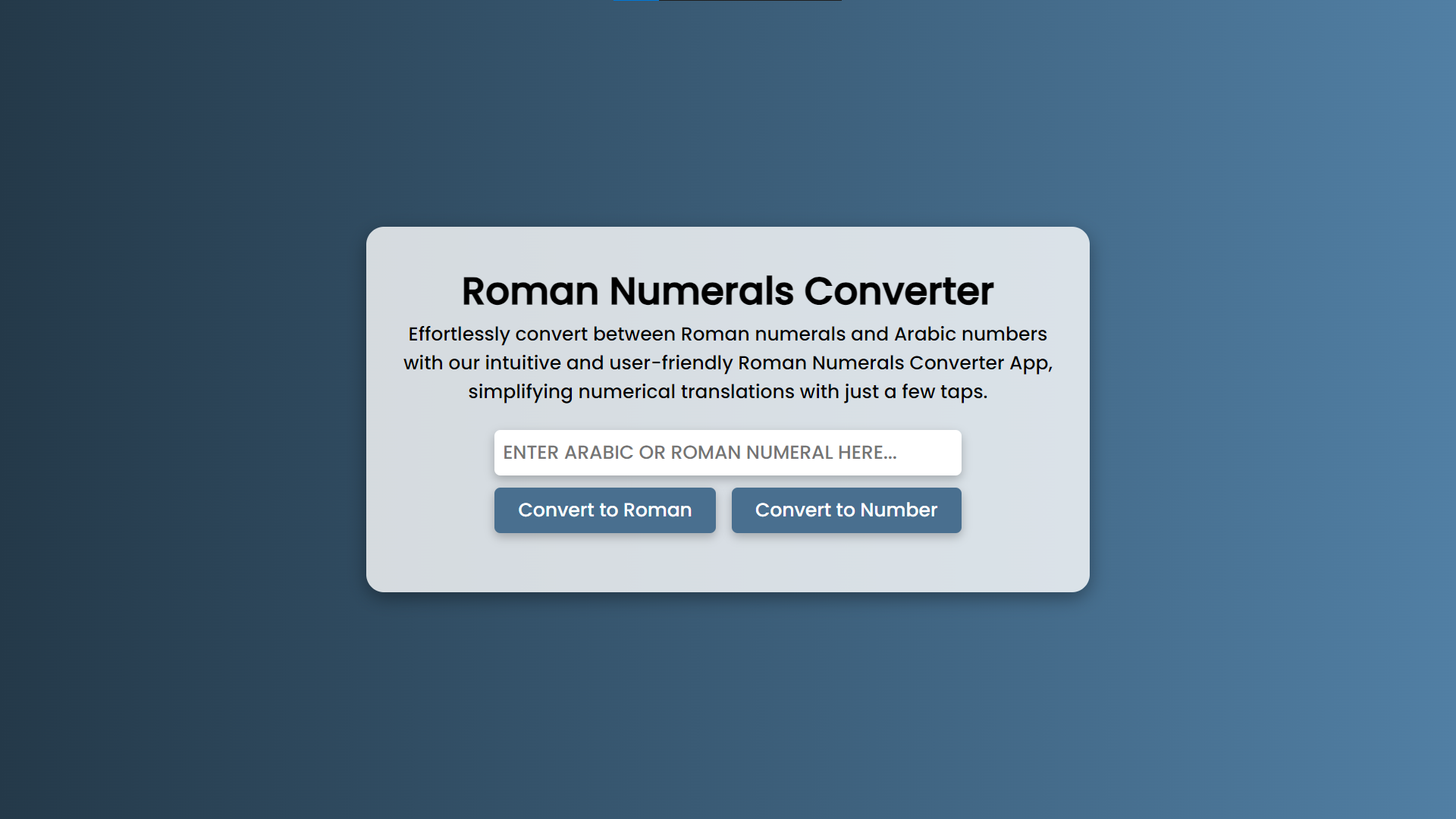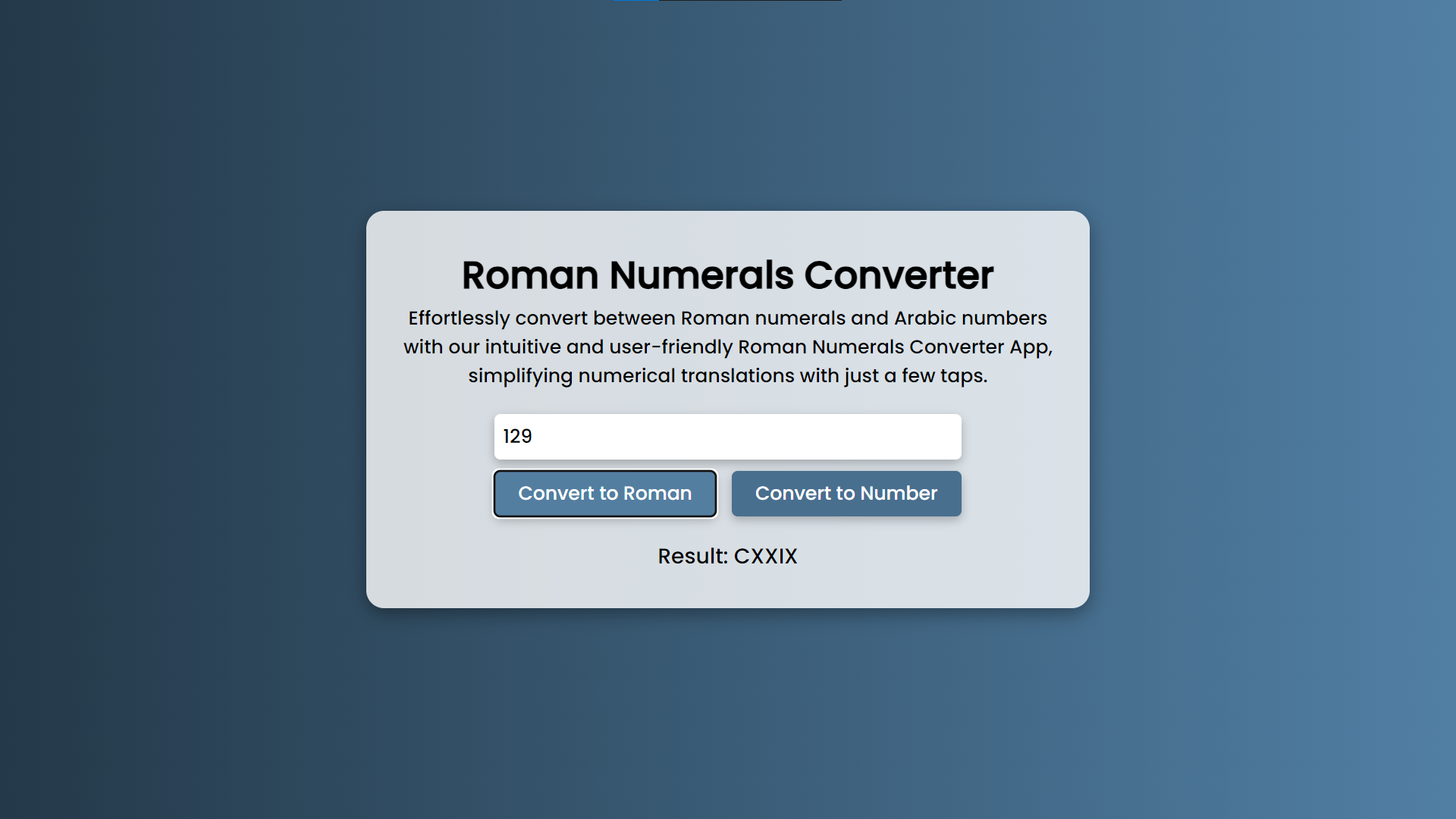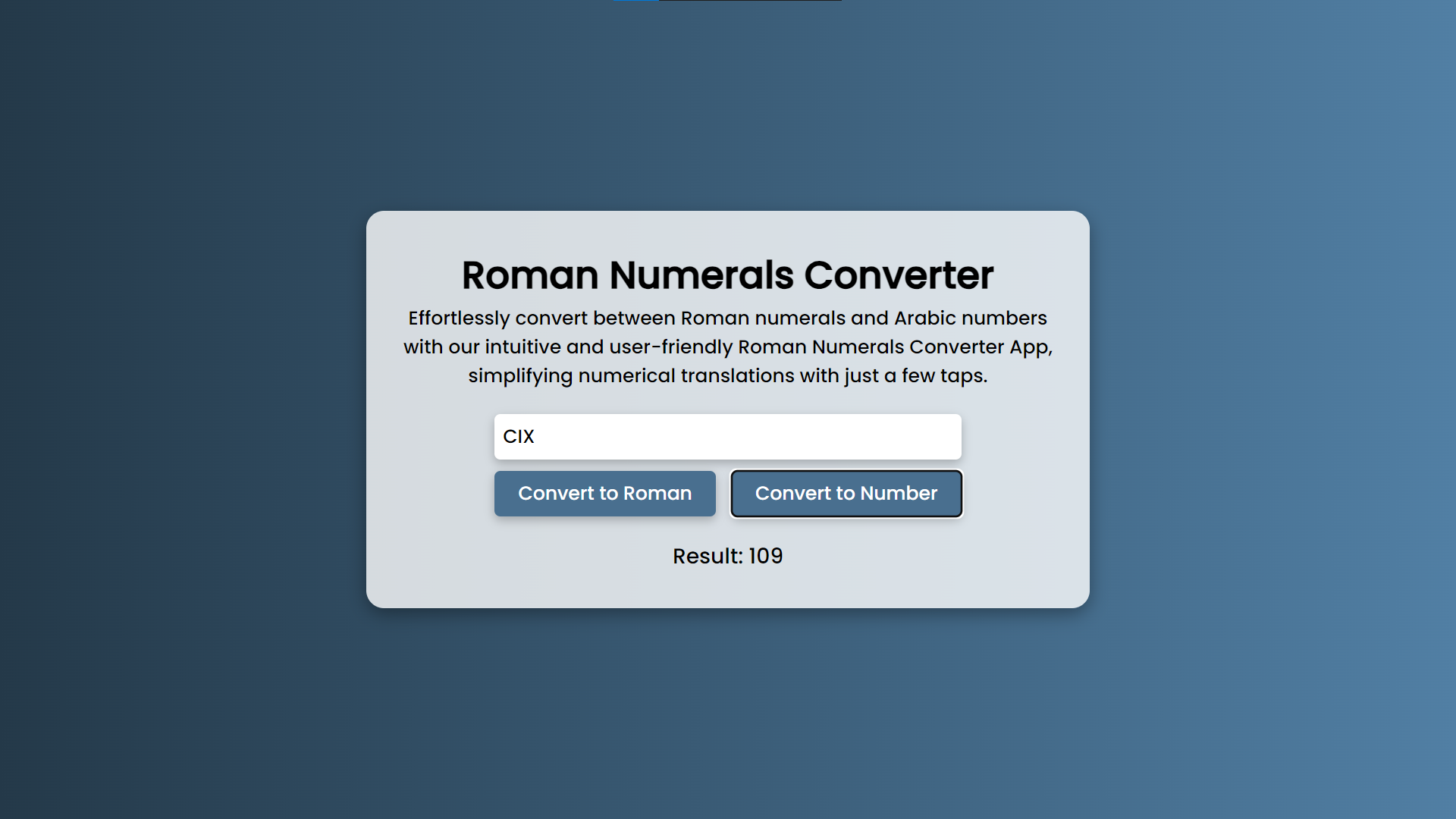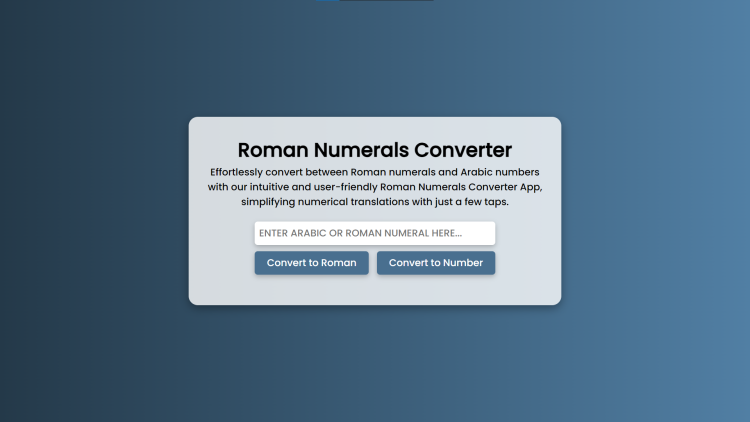Roman Numeral Converter Using HTML, CSS and JavaScript with Source Code
Welcome to the Roman Numeral Converter, a versatile web application crafted with HTML, CSS, and JavaScript, designed to simplify the conversion process between Roman numerals and Arabic numbers. This innovative tool offers a seamless experience for users seeking to decipher ancient numerical systems or translate modern values into their classical equivalents. By harnessing the power of web technologies, this converter provides an intuitive interface and robust functionality, ensuring accurate conversions with every input.
In today's digital landscape, understanding and working with Roman numerals remains a valuable skill across various disciplines, from historical research to film and television production. The Roman Numeral Converter caters to this need by offering a user-friendly solution accessible to all. Whether you're a student studying ancient civilizations or a professional in need of quick numerical translations, this application serves as a reliable resource, demonstrating the potential of HTML, CSS, and JavaScript in simplifying complex tasks while providing a seamless user experience.
You may also check this simple HTML, CSS and JavaScript projects:
- Movie Search App
- Morse Code Translator App
- Calorie Calculator App
- Typing Speed Test App
- To-Do List in Kanban Board
Features:
- Bidirectional Conversion: Convert both Arabic numbers to Roman numerals and vice versa seamlessly.
- Error Handling: Provides error messages for invalid inputs, ensuring accurate conversions every time.
- User-friendly Interface: Intuitive design and clear instructions make it easy for users to navigate and utilize the converter.
Technologies Used:
- HTML: The backbone of the application, providing the structure and content of the converter.
- CSS: Adds style and visual appeal to the interface, enhancing user experience.
- JavaScript: Powers the conversion logic, enabling dynamic interaction and real-time updates without page reloads.
How to Use:
- Input Field: Enter either an Arabic number or a Roman numeral into the input field.
- Conversion Buttons: Click on either "Convert to Roman" or "Convert to Number" button based on the desired conversion.
- Result Display: The converted value will be displayed below the input field, providing the corresponding Roman numeral or Arabic number.
Sample Screenshots of the Project:
Landing Page

Convert to Roman

Convert to Number

How to Run?
- Download the provided source code zip file.
- Extract the downloaded zip file.
- Open the html file and you are now ready to go!
Video Demonstration for Installation/Setup:
Conclusion:
In conclusion, the Roman Numeral Converter stands as a testament to the versatility and effectiveness of modern web development technologies in addressing timeless challenges. By leveraging the capabilities of HTML, CSS, and JavaScript, this tool streamlines the process of converting between Roman numerals and Arabic numbers, catering to a wide range of users across different domains. Its intuitive interface, coupled with robust error handling, ensures accurate and hassle-free conversions, making it an invaluable resource in both educational and professional settings. As we continue to embrace the digital age, projects like the Roman Numeral Converter highlight the enduring relevance of ancient numerical systems while showcasing the power of innovative web solutions in facilitating seamless user experiences.
That's it! I hope this "Roman Numeral Converter Using HTML, CSS and JavaScript" will assist you on your programming journey, providing value to your current and upcoming projects.
For additional tutorials and free source codes, explore our website.
Enjoy Coding :>>
Note: Due to the size or complexity of this submission, the author has submitted it as a .zip file to shorten your download time. After downloading it, you will need a program like Winzip to decompress it.
Virus note: All files are scanned once-a-day by SourceCodester.com for viruses, but new viruses come out every day, so no prevention program can catch 100% of them.
FOR YOUR OWN SAFETY, PLEASE:
1. Re-scan downloaded files using your personal virus checker before using it.
2. NEVER, EVER run compiled files (.exe's, .ocx's, .dll's etc.)--only run source code.

